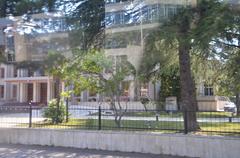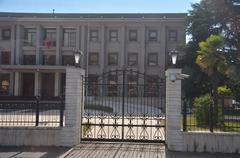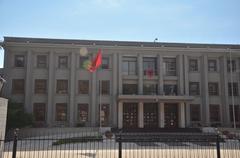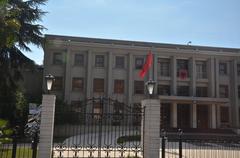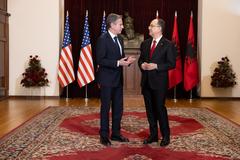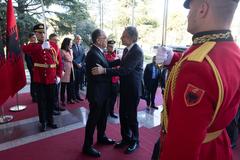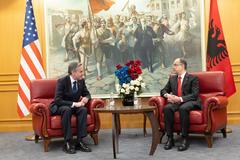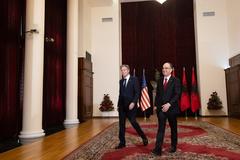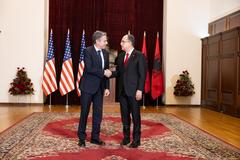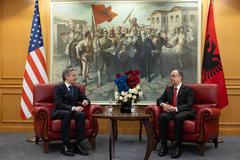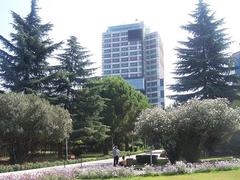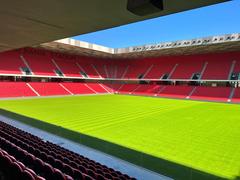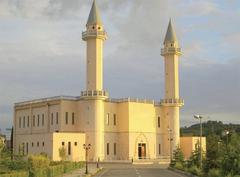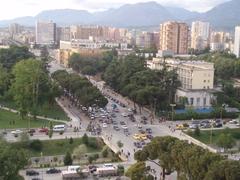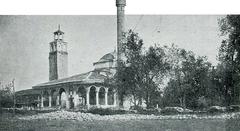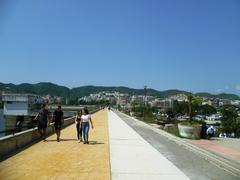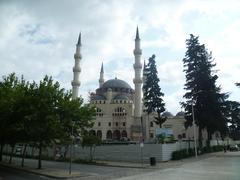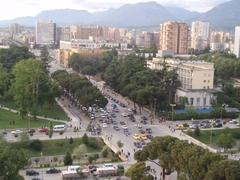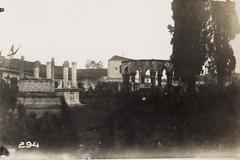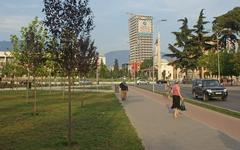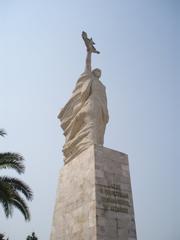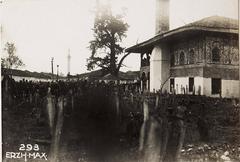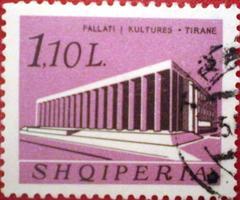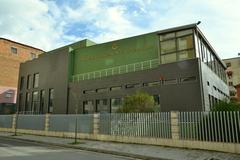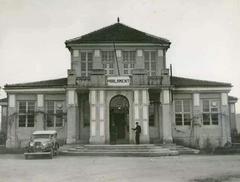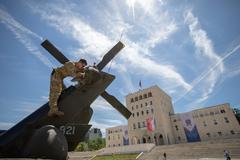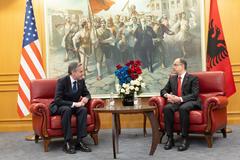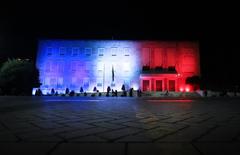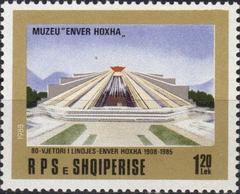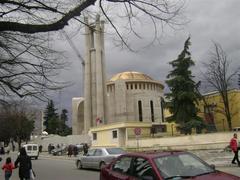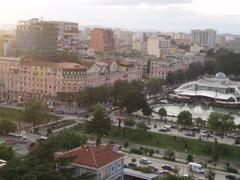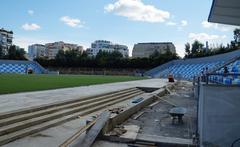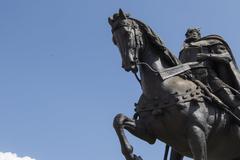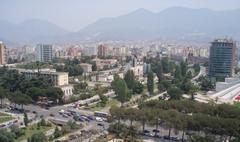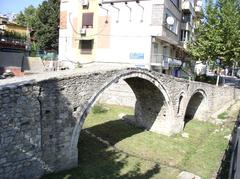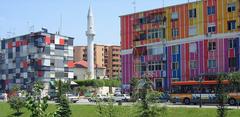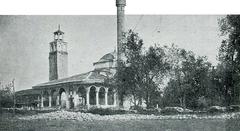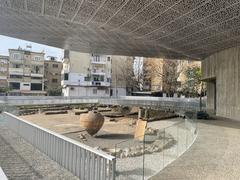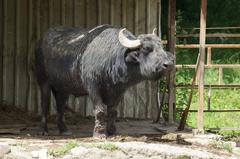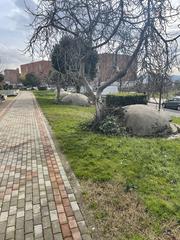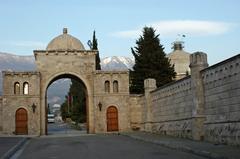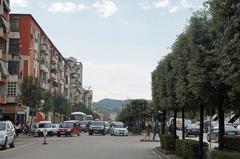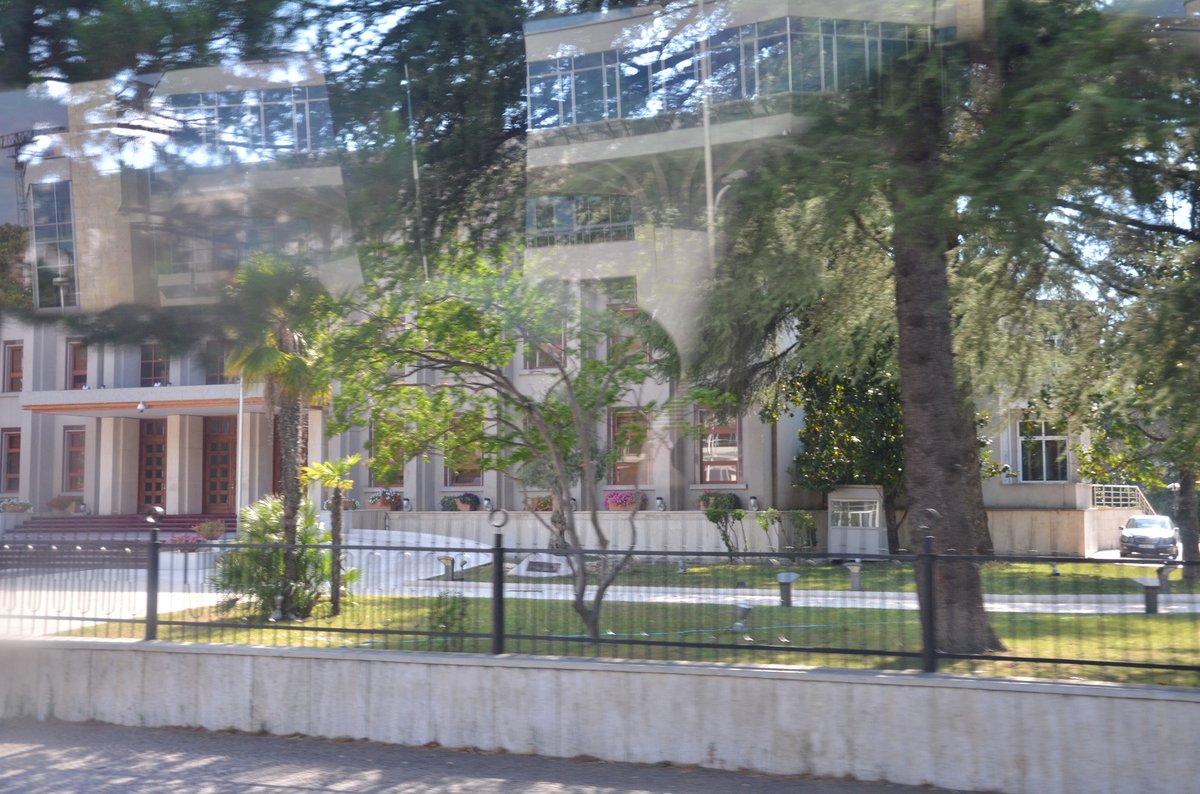
Complete Guide to Visiting the Presidential Palace of Tirana: History, Tickets, Hours, and Nearby Attractions
Date: 15/06/2025
Introduction
The Presidential Palace of Tirana, locally known as the Palace of Brigades (Pallati i Brigadave), stands as a testament to Albania’s intricate and dynamic history. Commissioned in 1936 by King Zog I, this grand palace was envisioned as a symbol of Albania’s sovereignty and modernization efforts. Over the decades, it has witnessed pivotal moments—from royal ambitions and foreign occupations to communist rule and the nation’s democratic transition. Today, the palace serves as the official residence of the President of Albania and is a protected cultural monument, offering visitors a rare glimpse into Albania’s layered past and present.
While public access to the palace interiors is limited due to its governmental function, the palace gardens and select areas are periodically opened for guided tours and special events. This guide provides a detailed overview of the palace’s history, architectural features, visiting information, and nearby attractions, ensuring you make the most of your time in Tirana.
For the latest visitor updates, event announcements, and booking, refer to the Visit Tirana website.
Table of Contents
- Historical Overview
- Architectural Highlights
- The Palace in Albania’s 20th-Century History
- Visiting Information: Hours, Tickets, and Accessibility
- Guided Tours and Visitor Experience
- Tips for Visitors
- Nearby Attractions
- Frequently Asked Questions (FAQ)
- Conclusion and Recommendations
- References
Historical Overview
The Presidential Palace traces its origins to the late 1930s, a period of significant political change in Albania. Commissioned by King Zog I, its construction began in 1936 under the Italian architect Gherardo Bosio, reflecting strong Italian influence in Albania at the time (Albanian Architecture). Intended as a royal residence, the palace’s completion was thwarted by the Italian invasion of 1939, leading to King Zog’s exile.
During WWII, the palace was repurposed as the residence of the Italian viceroy and later occupied by German authorities. After the war, the communist regime nationalized the property, renaming it the Palace of Brigades in honor of the partisan units. As a site reserved for government functions and ceremonies, it remained largely inaccessible to the public for much of the 20th century.
With the fall of communism in 1991, the palace was designated the President’s official residence. Today, it continues to serve a ceremonial and diplomatic role, hosting receptions, national celebrations, and high-profile events such as the royal wedding of Prince Leka II in 2016 (Wikipedia).
Architectural Highlights
The Palace exemplifies Rationalist architecture, a style popular in interwar Italy and characterized by geometric forms, symmetry, and restrained ornamentation. Gherardo Bosio’s design incorporates local stone and marble, with neoclassical and Art Deco influences evident in the building’s façades and interior details (Atlas Obscura). The palace’s monumental reception hall, ornate staircases, and intricate mosaics blend Albanian motifs with European elegance.
Set within a 74-hectare garden, the grounds are adorned with fountains, bronze statues, tree-lined avenues, and an odeon, offering a serene escape from Tirana’s urban core (Nomads Travel Guide). The gardens are especially attractive in spring and autumn, when the landscaping is at its most vibrant.
The Palace in Albania’s 20th-Century History
The palace’s history mirrors Albania’s turbulent journey through monarchy, fascism, communism, and democracy. It has served as a royal seat, military headquarters during occupation, and a symbol of government authority under communist and republican regimes. Its continued use for state functions underscores its symbolic role in Albanian national identity (Tirana Municipality).
Designated a cultural monument in 2004, the palace and its gardens are protected for their historical and architectural significance (Pine.al).
Visiting Information: Hours, Tickets, and Accessibility
Location: The palace is situated in the southern part of Tirana, near the Grand Park (Parku i Madh i Tiranës), accessible via Rruga e Elbasanit (Salt in Our Hair).
Opening Hours:
- Saturday & Sunday: 10:00 AM – 4:00 PM
- Weekdays: Closed (reserved for state functions)
Tickets: General entry to the gardens is free. Special exhibitions or events may require advance ticket booking via the Visit Tirana website.
Guided Tours: Guided tours are typically available on weekends in Albanian and English. Other languages may be arranged by request. Pre-booking is advised, especially during holidays.
Accessibility: Gardens are wheelchair accessible; some interior sections have steps or uneven surfaces. Contact palace administration for special accommodations.
Entry Requirements: Valid photo ID is required at security checkpoints. Large bags and professional camera equipment may be subject to inspection.
Guided Tours and Visitor Experience
Tours, lasting approximately 60–90 minutes, showcase:
- The grand entrance hall and ceremonial rooms
- Historical exhibits on the palace’s evolution
- Select state rooms and gardens with statues, fountains, and the tennis court
Photography is permitted in the gardens and select public spaces, but restrictions apply inside official rooms.
Visitor amenities: Benches, shaded areas, and restrooms are available. Vending machines and a small gift kiosk offer refreshments and souvenirs. There are no on-site cafés; bring water, especially in summer.
Tips for Visitors
- Best Time: Spring (April–June) and autumn (September–October) for pleasant weather and blooming gardens.
- Dress Code: Modest, comfortable attire suitable for a national monument.
- Security: Expect airport-style checks; follow staff instructions.
- Language: English is widely spoken by staff; using basic Albanian phrases is appreciated.
- Children: The gardens are family-friendly; supervise young children at all times.
Nearby Attractions
Combine your visit to the palace with these nearby sites:
- Grand Park of Tirana: Expansive green space with trails and a lake.
- Saint Procopius Church: Historic Orthodox church within the park (mywanderlust.pl).
- Tirana Zoo and Botanical Garden: Family-friendly attractions adjacent to the park.
- Blloku District: Trendy area with cafes, restaurants, and nightlife (chasingthedonkey.com).
- Skanderbeg Square: Central plaza hosting the National History Museum and Et’hem Bey Mosque.
For walking routes and public transport, consult Salt in Our Hair and the official Tirana tourism site.
Frequently Asked Questions (FAQ)
Q: Can I tour the interior of the Presidential Palace?
A: Interior access is limited to guided tours on weekends and special events. Check for updates and availability online.
Q: Is entry free?
A: Yes, general garden access is free. Special exhibitions may require tickets.
Q: Are the gardens accessible for wheelchairs?
A: Most garden areas are accessible; some historic interiors may not be.
Q: Can I take photographs?
A: Yes, in the gardens and exterior areas. Restrictions apply inside the palace.
Q: How do I book a tour?
A: Book via the Visit Tirana website or the Tirana Tourist Information Centre.
Conclusion and Recommendations
The Presidential Palace of Tirana is an essential destination for those seeking to experience Albania’s architectural grandeur and complex history. Its unique blend of royal, political, and cultural elements is best appreciated by joining a guided tour and exploring the gardens. Plan your visit during open weekends or special events, and combine your palace tour with nearby historical attractions for a comprehensive cultural experience.
For up-to-date information on opening hours, tours, and events, consult the Visit Tirana portal. Enhance your travel with the Audiala app for personalized guides and real-time updates.
References
- Wikipedia: Presidential Palace Tirana
- Atlas Obscura: Palace of Brigades
- Tirana Municipality: Palace of Brigades
- Nomads Travel Guide: Albanian Royal Palace
- Visit Tirana: Palace of Brigades
- Balkaneu: Albanian Presidential Palace Opens to the Public
- Salt in Our Hair: Tirana Guide
- My Wanderlust: Things to Do in Tirana
- Chasing the Donkey: Things to Do in Tirana
- Pine.al: Palace of Brigades
Visuals and Media Suggestions:
Include high-resolution images of the palace façade, gardens, and ceremonial halls. Use descriptive alt texts such as “Presidential Palace Tirana façade” and “Palace of Brigades gardens.” Interactive maps and virtual tour videos can further enhance the visitor experience.
Internal Linking Suggestions:
Integrate links to related articles on Skanderbeg Square, Et’hem Bey Mosque, and the National History Museum to encourage deeper exploration of Tirana’s heritage.
